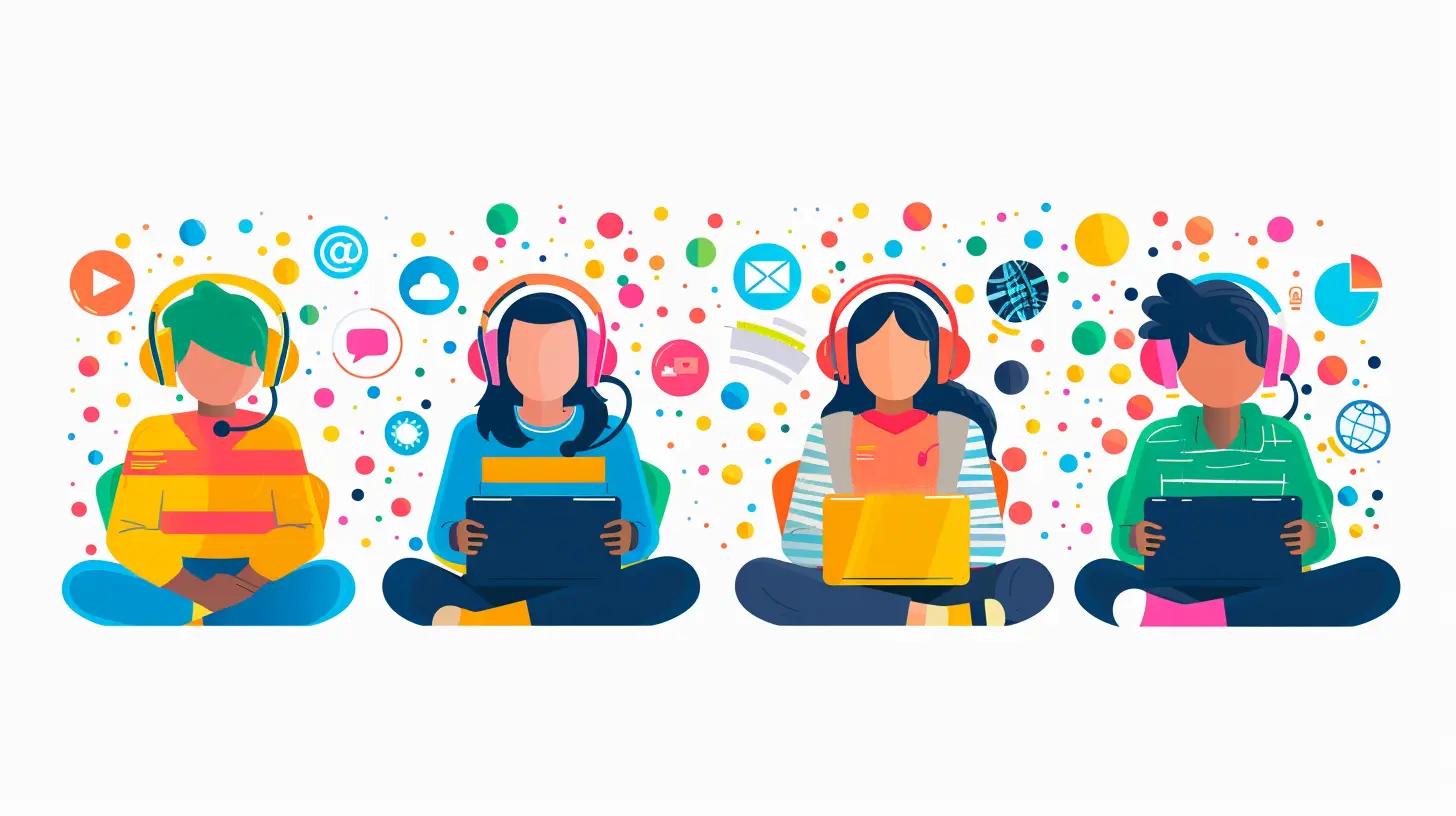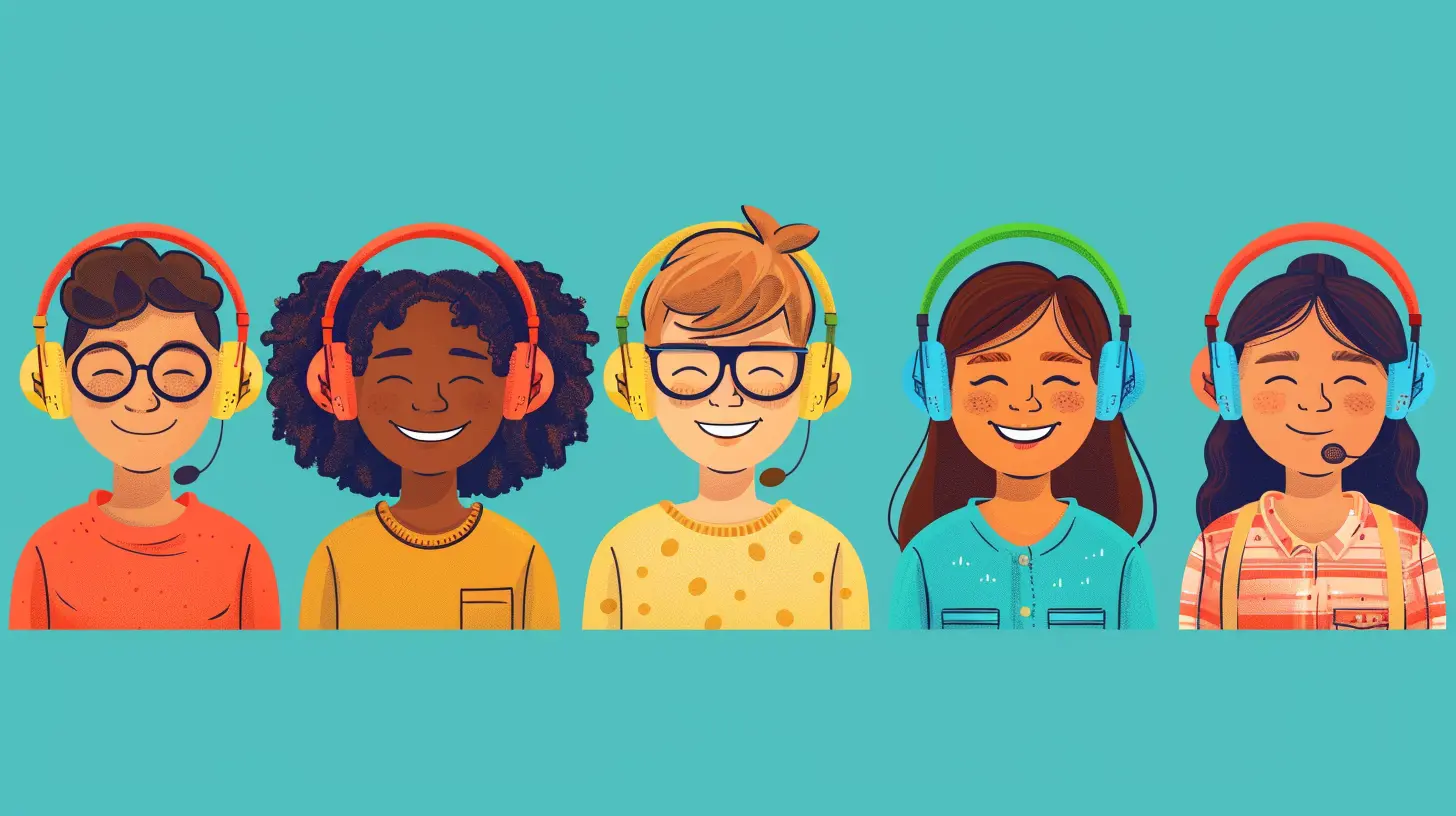The Art of Active Listening in Customer Support
3 August 2025
Let’s be real — if you've ever dealt with customer support, either as the frustrated customer or the tired rep on the other end, you know that listening is a big deal. But hold on — we’re not talking about the kind of passive listening where someone hears you talk but is already planning their lunch in their head. No, we’re diving deep into the art of active listening — a game-changing skill that can make or break customer relationships.
Whether you're rocking a headset in a busy call center or leading a customer experience team, active listening isn’t just a nice-to-have — it’s your secret weapon. So, let’s break it down together, human to human, and talk about what active listening really means and how you can master it to deliver unforgettable customer experiences.

What Is Active Listening, Really?
Active listening is more than nodding along or tossing out the occasional “uh-huh.” It’s about being 100% present and making the speaker (your customer, in this case) feel heard, understood, and valued. Think of it like tuning into your favorite podcast — you’re not passively letting it play in the background. You’re soaking in the details, catching the nuances, and maybe even rewinding to make sure you really got the message.In customer support, active listening involves more than just hearing the words. It's engaging with tone, context, emotion, and intent. It's reading between the lines and responding in ways that show you're not just listening — you're connecting.

Why Active Listening Matters in Customer Support
Let’s be honest: nobody contacts customer support because everything is going great. Most of the time, people reach out because something’s broken, confusing, or just plain frustrating. That means you’re not just solving a technical issue — you’re dealing with emotions, expectations, and (sometimes) a little bit of stress.Here’s what active listening does:
- Defuses tension: When customers feel heard, they're less likely to get angrier — even if you don’t have an immediate solution.
- Builds trust: Customers trust brands that take the time to understand them.
- Reduces escalations: Active listening helps resolve issues early, before they spiral into complaints or bad reviews.
- Creates loyalty: People remember how you made them feel. Listening actively creates a positive emotional experience they won’t forget.
Simple, right? But here’s the catch — it takes practice.
The Core Elements of Active Listening
Let’s peel back the curtain and look at what active listening is made of. It's not just one thing — it's a combination of techniques that work together like a well-rehearsed band.1. Paying Full Attention
Distractions are everywhere — Slack messages, background noise, multitasking backlogs. But when you're talking to a customer, they deserve your focus. When you listen like they’re the only person in the room, they feel it.2. Reflecting and Paraphrasing
Ever had someone repeat what you said in their own words? That’s paraphrasing, and it's a powerful way of showing the speaker they're understood.Customer: “I’ve tried everything, and my internet is still down.”
You: “So you’ve already taken some steps on your own, and the issue still isn’t resolved. Let’s see what we can do next.”
Boom — validation + understanding = trust.
3. Asking Clarifying Questions
Don’t assume. Ever. Customers often don’t use technical terms or might skip over details. Asking open-ended questions like “Can you walk me through what happened?” or “What have you tried so far?” uncovers the context you need to solve the problem right the first time.4. Acknowledging Emotions
This one’s huge. If a customer is frustrated, sad, or panicked, don’t sweep it under the rug. Address it with empathy.Try: “I get that this must be really frustrating — let’s work together to sort it out."
Notice the use of “together”? It’s like joining forces — emotional Avengers style.
5. Providing Thoughtful Responses
Active listening doesn't stop at nodding and asking questions. It’s about thoughtful responses that are tailored to what your customer is going through. It shows you're not working off a script — you're engaging like a real human.
The Business Case for Active Listening
Still not convinced this is worth the time? Let’s look at how active listening can actually impact your bottom line.✨ Customer Retention
It costs five times more to gain a new customer than to keep an existing one. When customers feel heard, they’re more likely to stick around. Active listening can turn a one-time buyer into a brand ambassador.⭐️ Boosted Satisfaction Scores (CSAT/NPS)
Survey scores are everywhere in the customer support world. And guess what? The way your team listens directly influences those Customer Satisfaction (CSAT) and Net Promoter Scores (NPS). Active listening = better scores = a stronger brand.🔁 Fewer Repeat Contacts
When support reps get it right the first time — thanks to understanding the full issue — customers don’t need to call back. That clears up queues, reduces costs, and gives your team time to focus on complex tasks.💬 Word-of-Mouth Magic
People talk. And when they get top-notch, human-first support, they’ll tell their friends, family, and, oh yeah — social media. Active listening can literally turn a support call into a 5-star tweet.How to Train Your Team in Active Listening
Good news — active listening isn’t some mystical trait you’re born with. It’s a skill, and you can build it just like anything else. Here's how to make it part of your support DNA.🧠 Start with Awareness
Teach your team what active listening is and why it matters. Use real examples, role-playing, and even recordings of past calls to help them understand the difference between passive and active listening.🎧 Practice Makes Progress
Set up practice sessions where team members take turns playing the customer and support agent. Give feedback, tweak responses, rinse and repeat.📝 Use a Listening Checklist
Give your team a cheat sheet they can use during real calls or chats. For example:- Did I let the customer finish talking?
- Did I paraphrase their concern?
- Did I ask relevant follow-up questions?
- Did I acknowledge their feelings?
Simple, but powerful.
💡 Encourage Self-Reflection
After each call or support interaction, have team members reflect:- What did I do well?
- Where could I have listened better?
- What would I change next time?
This kind of self-awareness is the rocket fuel for growth.
Common Barriers to Active Listening — And How to Beat Them
Let’s face it — listening sounds easy until you’re in the thick of a busy day with back-to-back calls and a mile-long queue. Here are some common blockers, and what you can do about them.1. Multitasking
You might think you’re saving time, but multitasking kills focus. Encourage your team to be fully present. One customer at a time. One problem at a time.2. Judging or Assuming
When we assume, we close the door to new information. Active listening requires you to suspend judgment and stay curious. Think: detective, not judge.3. Reacting Instead of Responding
It’s easy to get defensive, especially if a customer is upset. But reacting emotionally only escalates things. Instead, breathe, listen, and respond calmly. Take a beat — it matters.Active Listening in Different Support Channels
Customer support isn’t just phone calls anymore. Let’s talk about how to apply active listening across different channels.📞 Calls
Tone is your best friend here. Use your voice to convey empathy, patience, and presence. Smile while you talk (yes, really — customers can hear it).💬 Live Chat
Active listening in chats means:- Reading carefully
- Mirroring key phrases
- Responding in thoughtful, non-cookie-cutter ways
Example:
Customer: “I’ve tried to fix this five times already.”
Wrong: “Sorry to hear that.”
Better: “Wow, five times — that’s super frustrating. Let’s make this one count.”
✉️ Email Support
It takes more effort to show listening in writing — so be detailed.- Summarize their concern
- Acknowledge feelings
- Give clear, personalized next steps
Think of it like writing a helpful response to a friend — not a ticket number.
Final Thoughts
In today’s world, where automation often takes the front seat, human connection is the differentiator. And at the heart of that connection? Active listening.Mastering this art won’t just help you solve problems — it’ll help you build trust, de-escalate tension, and turn frustrated customers into loyal fans. Isn't that what great support is all about?
So next time you're chatting with a customer, take a deep breath, tune in, and truly listen. Not with the intent to reply, but with the intent to understand. That one shift? It changes everything.
all images in this post were generated using AI tools
Category:
Customer ServiceAuthor:

Rosa Gilbert
Discussion
rate this article
1 comments
Daniel Banks
Active listening is not just a skill; it's the backbone of exceptional customer support. By genuinely engaging with customers, we build trust and enhance satisfaction. Prioritizing this art transforms interactions into meaningful connections, driving loyalty and ultimately, business success. Let's make active listening our standard practice.
August 6, 2025 at 1:00 PM

Rosa Gilbert
Thank you for your insightful comment! I completely agree—active listening is indeed crucial for building trust and fostering meaningful customer relationships. Let's continue to prioritize this essential practice in our support interactions!


